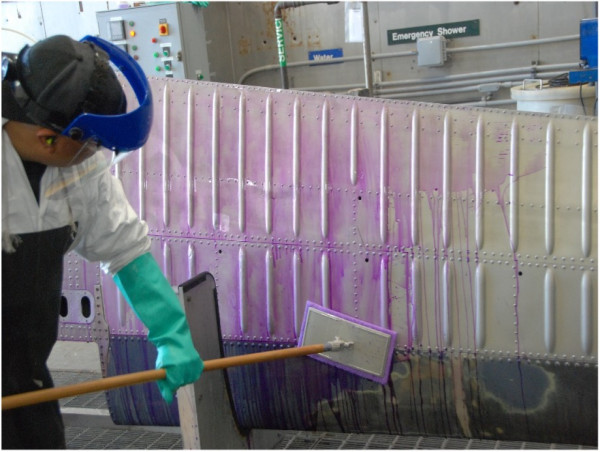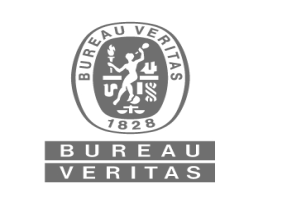The familiar brown conversion coatings — long associated with aircraft like the AH-64 Apache and UH-60 Black Hawk — are being phased out. This strategic shift is more than cosmetic. It’s part of a broader initiative led by the U.S. Army Aviation and Missile Command (AMCOM) Heavy Metals Working Group to eliminate hexavalent chromium (Cr6+), a known carcinogen, and transition to safer alternatives across Army aviation platforms.
The efforts of AMCOM’s Heavy Metals Working Group involve years of testing alternatives to existing hex-chrome materials.
Recently, a newly patented next-gen solution called CHEMEON eTCP, came onto the radar of AMCOM and under review by the Heavy Metals Working Group. To trace the path of how a new innovation like eTCP is validated as a solution to replace a legacy military workhorse like hex chrome, you need to look back nearly 100 years. The full integration of hexchrome into military applications likely started as early as 1941. Wartime production ramped up, the need for effective corrosion protection became critical for maintaining equipment in harsh environments. Cr6+ has been the Army’s standard corrosion inhibitor. Integrated into paints, primers, conversion coatings, and sealants, CrVI offered unmatched protection in extreme environments — from salt-laden coastal air to abrasive desert dust. These materials enabled legacy aircraft, weapons, and vehicles to remain operational far beyond their original service lives. This durability has come at a significant cost. Cr6+ is a toxic heavy metal that poses severe risks to personnel and the environment. Recognizing this, the Department of Defense issued Directive 5000.01 to minimize environmental and occupational hazards. Army Acquisition Policy followed, explicitly targeting Cr6+ for elimination in production, maintenance, and sustainment activities.
Transitioning away from Cr6+ is not as simple as swapping one material for another. Many military platforms remain tethered to outdated technical data packages (TDPs) and specifications requiring Type I hexchrome coatings under MIL-DTL-81706. Unless updated by OEMs or the DoD, these requirements remain binding for depots, field repair stations, and MRO contractors. Even where alternatives exist, few match Cr6+ one-for-one in performance, particularly in corrosion resistance, adhesion, and long-term durability. This has made the transition both technically and administratively complex. Additionally, a significant amount of testing is required to ensure performance requirements are not compromised with the non-Cr6+ alternative.
The financial burden is significant. These investments aim to reduce exposure, but the root issue remains: Cr6+ is still widely used. Personnel working with hex chrome face elevated risks of respiratory illness and cancer, monitored through ongoing medical surveillance programs.
To address this challenge, AMCOM formed the Heavy Metals Working Group — a coalition of over 60 subject-matter experts from across the Army’s engineering, environmental, and logistics directorates. Led by figures such as Mark Feathers, AMCOM G-4 Lead Project Manager, Scott Howison, Physical Scientist. AMCOM-G4, and Jasmine Briant, Physical Scientist, AMCOM-G4, the group has spearheaded the Army’s Cr6+ elimination effort. Their dual mission: protect personnel and sustain mission readiness. Feathers notes that “It was recognized early that protection of our people and sustainability of our maintenance processes required the elimination of hexavalent chromium...Aluminum conversion coatings, being very pervasive in our processes, became a very high priority for replacement since the risk exists while applying and removing this coating.”
AMCOM’s Heavy Metals Working Group collaborates closely with the Combat Capabilities Development Command Aviation and Missile Center and the Army Research Laboratory to test, validate, and transition viable alternatives into production. It also collaborates with partners at NAVAIR and the Air Force to share technological developments for the mutual benefit of the DoD industrial base. Army Contracting Command, resource managers align funding, update contractual requirements, while technical leaders validate materials are qualified under relevant MIL-specs.
One such material class is Type II trivalent chromium conversion coatings — CrVI -free alternatives approved under MIL-DTL-81706B and MIL-DTL-5541F for brush/wipe, spray, immersion, and touch-up applications. These coatings, listed on the Qualified Products Database (QPD), represent a new generation of solutions offering comparable corrosion resistance without the toxic burden of Cr6+. Among these, eTCP — a patented Type II trivalent chromium product from CHEMEON — provides a distinct violet color indicator, allowing visual verification that a part is coated. This color serves as a subtle nod to the legacy brown of hex chrome, while signaling a safer path forward. According to Scott Howison, “We recognized that a technological advance in the chemistry of conversion coatings of aluminum had occurred under a Navy NESDI project. The result was the development of eTCP. It only made sense to partner with our Navy colleagues for a cross-service solution that could provide benefits to sustainability and readiness across the defense industrial base."
The Army communicates validated materials like eTCP to the broader maintenance and repair community through depot and field maintenance documentation like Aviation Maintenance Action Messages (AMAMs). These channels ensure that depots, field repair teams, OEMs, and coating facilities receive timely updates and implementation guidance. Howison added, “Many factors are carefully considered in the rollout of a new technology like eTCP for use by artisans and field maintainers. Our objective is to ensure the smoothest implementation possible by provisioning the supply chain to handle increased demand, training the workforce, and then providing ongoing support to maintainers and war fighters as they begin to use the new technology to protect our assets.”
As Type II conversion coatings are implemented at depots and field repair stations, the Army is not merely replacing a material — it is retiring a chemical legacy, marking a turning point: proving that innovation in materials science can safeguard both mission readiness and human health.“The diligence of AMCOM’s Heavy Metal Working Group to identify, test, and validate eTCP ensures the Army remains ready to protect air, land, and sea with a safer environmental solution that also protects applicators from the depot to the frontline." said Ted Ventresca, President/COO at CHEMEON.
Eduardo Ventresca
CHEMEON Surface Technology
+1 775-301-5733
email us here
Visit us on social media:
LinkedIn
Facebook
X
Legal Disclaimer:
EIN Presswire provides this news content "as is" without warranty of any kind. We do not accept any responsibility or liability for the accuracy, content, images, videos, licenses, completeness, legality, or reliability of the information contained in this article. If you have any complaints or copyright issues related to this article, kindly contact the author above.
![]()




